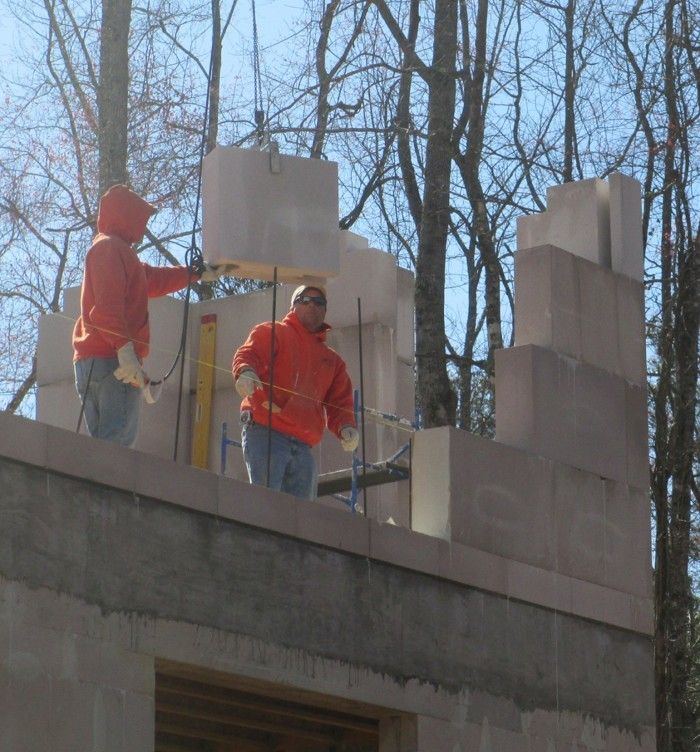
Autoclaved aerated concrete seems like a miracle material. So why aren’t more people building with it?
Steven Knapp and his wife are planning to build a house in Atlanta, and their shared chemical sensitivities had prompted them to consider using autoclaved aerated concrete (AAC) block for the walls rather than standard wood framing. For those of you who are not familiar with this material, AAC is a porous, lightweight type of concrete block that can be cut with conventional woodworking tools. The Knapps’ hope was that AAC blocks would introduce fewer contaminants into their home while still delivering reasonably good R-values.
But as they waited for market conditions to improve before launching into construction, things changed, as Knapp writes in the Q&A forum at GreenBuildingAdvisor.com. They’re now trying to decide whether to opt for standard wood-frame construction or go with AAC at a slight cost premium.
Knapp thinks the “effective R-value” of an 8-in.-thick AAC wall should be about 21–not outstanding but still perfectly acceptable. That assumption is under fire from GBA readers, however, who argue that true R-value performance may be something else altogether and that AAC construction faces other problems in the “muggy-sticky” conditions of the Southeast.
That’s the topic for this Q&A Spotlight.
Fine Homebuilding Recommended Products
Fine Homebuilding receives a commission for items purchased through links on this site, including Amazon Associates and other affiliate advertising programs.

Reliable Crimp Connectors

Affordable IR Camera

Handy Heat Gun




























View Comments
After the Great Fire of London, England from the 2nd to 5th September 1666, wooden buildings were banned in London.
Most homes are built with double skins and cavities, the inner walls being made of AAC blocks, then comes two inch thick sheets of closed cell insulation, a two inch wide air gap, and bricks on the outside.
Plastered AAC blocks air air tight.
The bricks are fireproof as are the blocks, the insulation melts at 360 degrees centigrade.
Sheets of closed cell insulation are usually placed inside the cavity against the block wall. The cavity ensures that any rain that finds its way through the bricks runs down the inside of the bricks and passes out of the cavity through plastic vents keeping the AAC blocks dry.
Homes made of bricks and blocks do not suffer from mold as while they may be damp from time to time there is no food for mold to grow on.